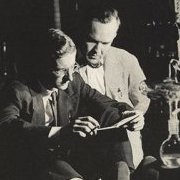-
Posts
518 -
Joined
-
Last visited
Recent Profile Visitors
2911 profile views
Dubbelosix's Achievements

Molecule (6/13)
22
Reputation
-
The wave particle duality as seen in the double slit experiment shows that the particle is not always a wave, so this idea that waves is all there is means nothing to me, sorry. It's been suggested I am not posting mainstream science and I have contacted through the appropriate channels. Strange how I am being accused of being outside mainstream when I am posting quotes from other places which support this idea that rotation is a real property so long as there are internal degree's of freedom - by the way, I already said this had gone off topic when we started discussing ''my opinions'' on particles, yet I am shafted in the open even though I was somewhat baited into those discussions by Swansont. My original reply here stays, a nucleus can rotate and will have a rotational kinetic energy, anything that classical rotates, uses energy.
-
I agree, things like me and you only appear solid, because when objects tend to push together, electrostatic interactions push back. Gives things solidity on our level, but is really a composite system of much more complicated decohered systems owing their existence to entanglement and properties like the zeno effect in which evolution of wave functions do not happen. Though a misnomer, I do believe in wave particle duality, I prefer to call it, wave particle complimentarity.
-
Mordred, the world is not just a construction of waves? And a string is cited as a spatially-extended object?
-
I am not a stringy person anyway, that wasn't my point. And whether or not its a different theory, it still matters, because it uses a rescaling principle to explain why point like interactions occur. Yes I know people say this. But isn't this going off topic a bit. the question in this thread really should be about whether a nucleus rotates. No one disputes here a nucleus is composite and has real internal dynamics. My opinions about fundamental particles are pointless here. Though, clearly the matter of real rotations for the nucleus has been pertinent to history since the literature indicates that a non-spherical nucleus can only do this. Which occurs frequently in nature as well.
-
But it is still spatially extended. It is not a pointlike particle.
-
In fact, I'll just leave you to give me a list, because I think quarks can be ruled out (they always form composite systems). Not sure really about the treatment of other fundamental particles, the Neutrino for instance is a strange object. Then how come strings are allowed to exist? Why do we make these assumptions and hold on to them concerning particles? And why is it ignored in this discussion, that pointlike particles are directly related to the divergence problems, why doesn't that upset people like it troubles me?
-
A top quark is certainly not pointlike, mind you they consist of composite systems anyway (you never find a free quark) and so can have a centre of mass. I am of course excluding massless radiation in this. What particles did you have in mind?
-
There are two types of spin, classical and intrinsic. It's you who isn't getting it, the electron is the only pointlike particle because we cannot measure internal degree's of freedom and so of course, has an intrinsic spin. But this cannot be haphazardly applied to all particle systems, like you are doing.
-
It sure does. Anything that classical rotates, requires energy.
-
What I am saying is that intrinsic spin was a concept that was deemed necessary for point like systems. To think that this idea intrinsic spin should be modelled to all systems, even though they may have internal degree's of freedom, is an unfounded assumption. There is evidence the nucleus rotates from the rotational bands as suggested by that poster and so would possess a rotational kinetic energy, simply from the classical equations that describe this property. Of course, rotational bands are more complicated objects than your standard definition in classical mechanics, however, in much the same way as classical physics, I expect there to be corrections to the kinetic energy formula for much the same reason.
-
I haven't provided you a direct example, simply because I haven't found the right kind of material yet. But by the Poincare space translations, there is no need for a system with a radius to possess such a thing as an ''intrinsic spin.'' This seems to be something that is being completely ignored, intrinsic spin was a property given to the electron because attempts to measure a radius have failed. A poster in the link I gave you however, could give an example, albeit, it was verbal. Let me find it, we'll go through it. So he says ''If you're talking about a single particle, the rest mass is defined to be the total energy when the particle is at rest - there is no way to separately discuss contributions to this energy. Furthermore, "spin" does not represent a degree of freedom - there is no motion associated with it, and hence no kinetic energy. Some compound particles on the other hand have genuine rotational degrees of freedom. A deformed (non-spherical) nucleus can rotate, and may therefore possess rotational bands: excited states with increasing angular momentum, and associated rotational kinetic energy.''Reference https://www.physicsforums.com/threads/does-spin-have-rotational-kinetic-energy.540443/
-
Whereas I think the issue is problematic for pointlike systems. Our models can't seem to handle them as they natural create divergence problems. One solution was to suggest field theory provided an answer by electron shielding of the particle, but study of the electron shape casts some doubt on this.
-
It may take some time, but I'll write something up.
-
Yes. Ok. Maybe we should create a thread on this topic, gather as much evidence as we can for this argument. It's a good topic, I just wish it had started on better terms.
-
If you mean there is a difference between something being pointlike and being a point in reality, fair enough, but there should be some things made clear about objects that act like they are point like interactions. Just because something tends to act like a pointlike object, does not tend to mean in physics it is. Classical physics already predicted early on that particle interactions would be pointlike in nature. I forget the mathematical details now, but this is true. String theory of course, is about extended objects in space but are rescaled to interact like pointlike objects. ... Ok I just took a look at your link, what is it you mean Mordred about this point? The main question was actually about a nucleus and whether it has a rotational kinetic energy. I explained it can and will have if the nucleus is not perfectly spherical.






